EMPOWERHOUSE is a community-based approach to Net-Zero home design, showcasing two affordable, energy-efficient solar powered homes and a neighborhood learning garden for inner-city Washington DC and beyond.
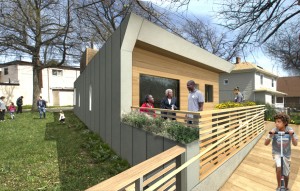

The Net-Zero Home of the Future Is Now a Reality
By Jared Green, Originally Published By ASLA’s The Dirt
Lakiya Culley, an administrative assistant at the U.S. State Department and mother of three, just moved into one of the most innovative, energy-efficient houses in the U.S. In Deanwood, a working class, primarily African-American neighborhood of Washington, D.C. that has recently struggled with foreclosures, Culley is now the proud owner of Empowerhouse, a home designed using “passive house” technologies by students at the New School and Stevens Institute of Technology. The home wasn’t just built from scratch though: it came out of the Solar Decathlon design competition, which was held on the National Mall in 2011. Developed in partnership with Habitat for Humanity and the D.C. Department of Housing and Community Development, the house marks “the first time in the Solar Decathlon’s history” that a team partnered with civic and government organizations to make a house a reality in the District.
Net-zero has become a global rallying cry in the race to tackle climate change. “Put simply, net-zero means we are not adding new emissions to the atmosphere,” says the United Nations, which is coordinating the global Race to Zero campaign. “Emissions will continue, but will be balanced by absorbing an equivalent amount from the atmosphere.” Net-zero is harder to achieve than carbon neutrality. One key difference is that net-zero involves eliminating indirect emissions generated by the entire value chain, which includes all suppliers and customers. — dezeen
STORY: Path to 100% Renewable Energy: The Los Angeles Model
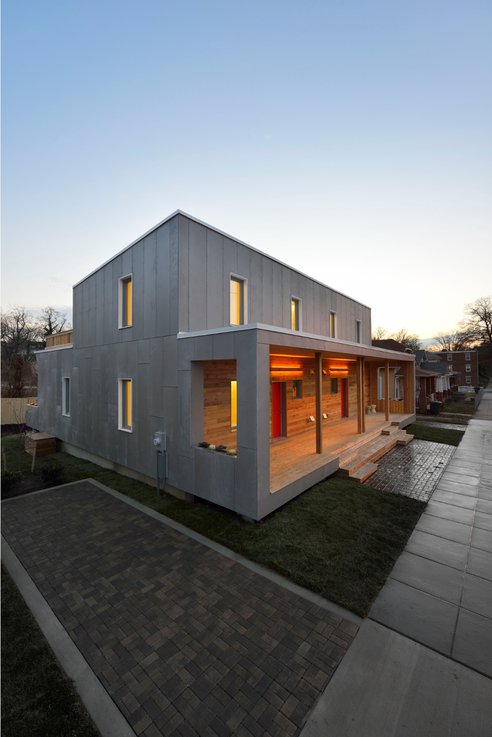

Affordable Passive House
After some criticism that Solar Decathlon homes were getting out-of-control-pricey to build and therefore weren’t realistic real-world models, the organizers added a “affordability” category in which teams could earn points. Empowerhouse scored really high in that category in comparison with a home from Germany, which cost upwards of $2 million. In fact, according to a spokesperson at New School, each unit of the actual Empowerhouse in Deanwood (there are two apartments in the mini-complex) cost just $250,000, making it affordable in that neighborhood. The model has been such a hit that six more are being planned for Ivy City, another inner-city neighborhood in the District.
This “net-zero” home itself is a marvel. The home produces all its own energy needs and consumes 90 percent less energy for heating and cooling than the conventional home. The bright, bold exterior lights up the whole block.
STORY: Passive-Solar Greenhouse-Wrapped Nature House in Sweden
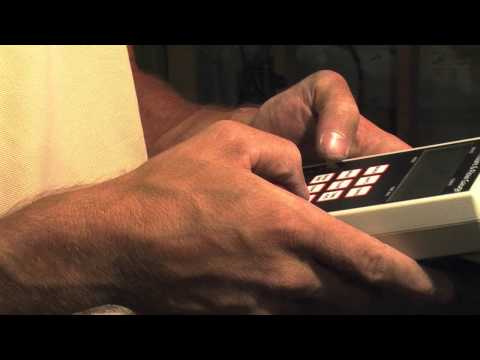
Watch this video on YouTube
Documentary on Passive House Construction from Charlie Hoxie
A Sustainable Landscape
But the fine exterior and healthy, light-filled interior built out of sustainable, recycled materials shouldn’t distract from the great landscape architecture components, which were integrated into the project from the beginning, said Professor Laura Briggs, faculty lead of the project, at the New School. As Briggs explained, the home is designed to capture all rainwater that hits it and surrounding homes.
Each unit has terraces with green roofs and small plots for urban agriculture that are designed to capture some water. In the rear of the building is a rain garden that captures any rainwater that escapes from the roof gardens. On top of that, each unit has its own underground cistern, where rainwater is collected and then used to water the property.
The integrated system also synchs up with the front and sides of the home. There’s the District’s first residential green street, a deep trough filled with dirt and plants designed to soak up street runoff and deal with the oily pollutants that the runoff collects on streets. At the sides of the house, the parking space is actually made up permeable pavers that allow storm-water to sink into the underlying soils.
STORY: Dark Omen: Climate Chaos Converges with Solar Eclipse Wisdom
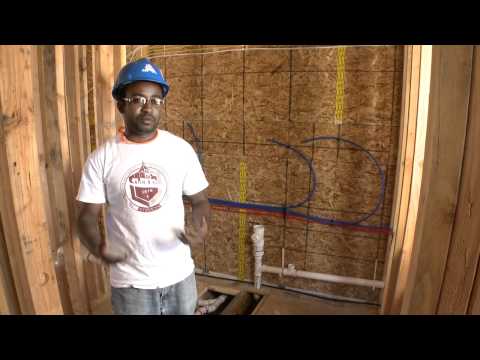
Watch this video on YouTube
Empowerhouse in Washington DC from Parsons The New School of Design
In terms of social sustainability, the piece so often left out of the puzzle, both the homes and landscape were co-designed with the community. Students met with community members, local organizations, and Culley, the owner, in a series of design charrettes. The result of all that outreach and collaboration will be more projects in the neighborhood, including a new community “learning garden.”
The project then is not only a powerful model for how to bring sustainable, affordable, community-based housing to the District, but also how to create real stormwater management solutions that address the truly local environmental problems: the heavy runoff that impacts the already polluted rivers.
Another benefit of the project worth noting: Habitat for Humanity now knows how to build out these passive house homes in a low-cost way. While the house was built by volunteers from Habitat, all of the landscape work was done with a few amazing local organizations: Groundwork Anacostia and D.C. Greenworks.
Jared Green is editor of The Dirt, the blog of the American Society of Landscape Architects (ASLA). The Dirt covers news on the built and natural environments.
Updated 27 June 2021

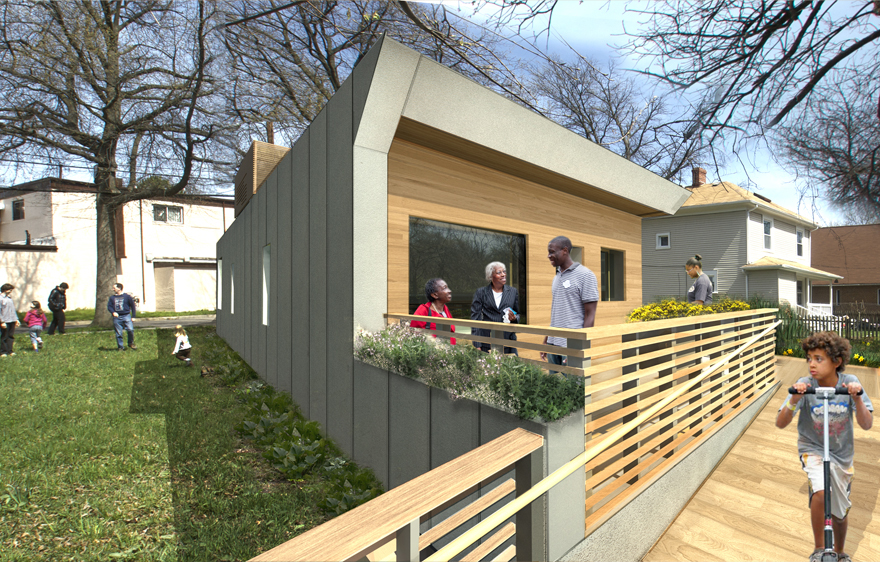


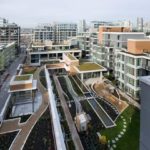
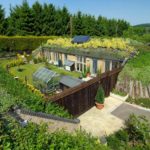
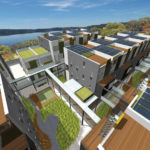
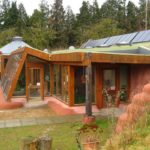






I have been looking for a way to have my own house and at the same time avoid a mortgage that would last for the rest of my life- I’m 60. I have found so many “affordable” ways to build a house. This one doesn’t seem enough affordable to me but surely it’s a very interesting house. If it becomes more affordable please let me know. I loved it!!!!!!!!!
Extremely useful information which you have shared here. This is a great way to enhance knowledge for us, and also helpful for us. Thankful to you for sharing an article like this.